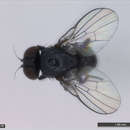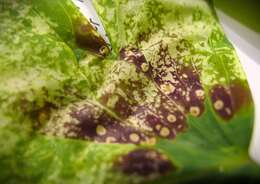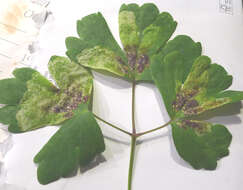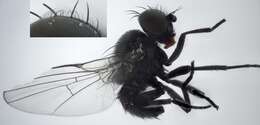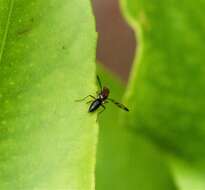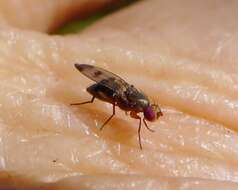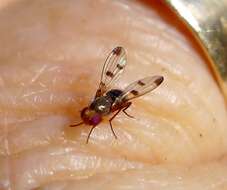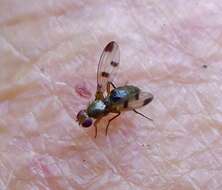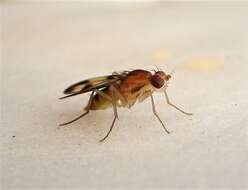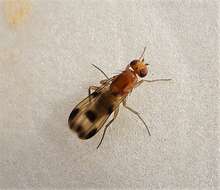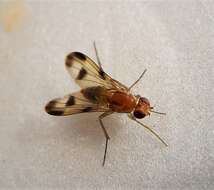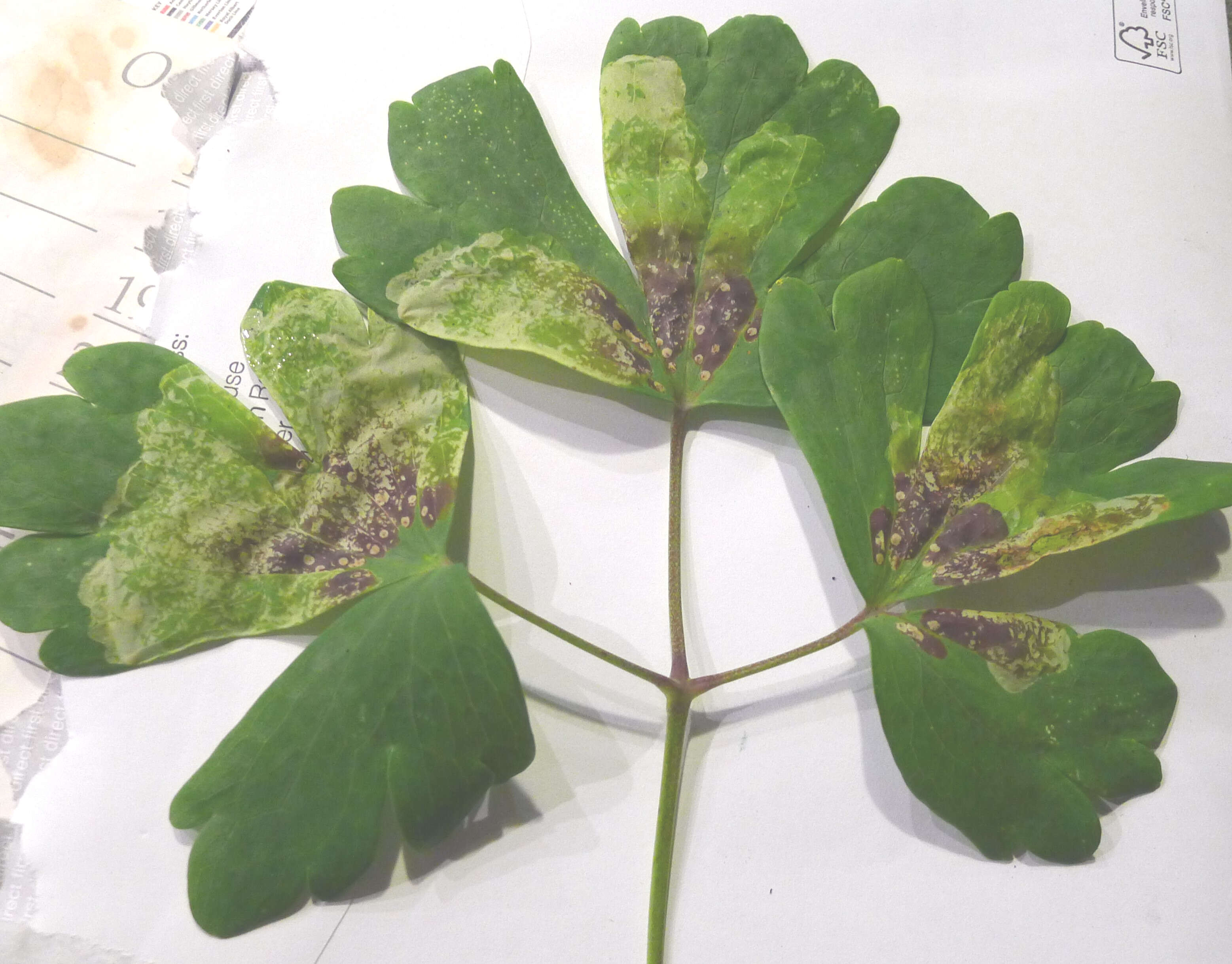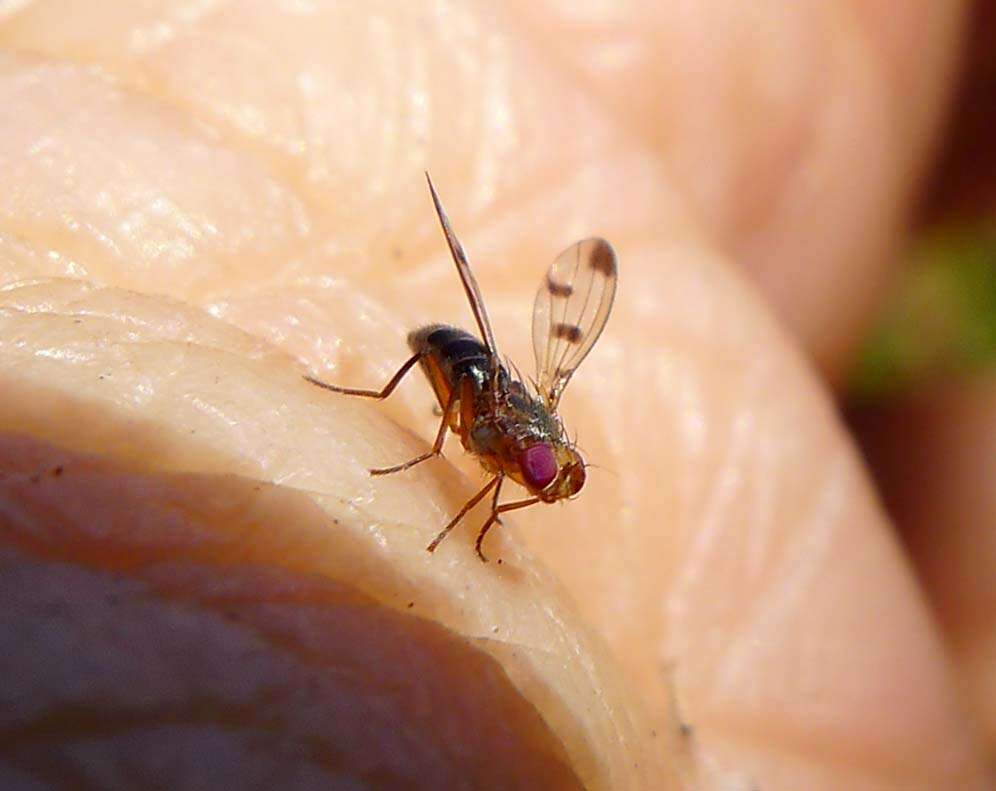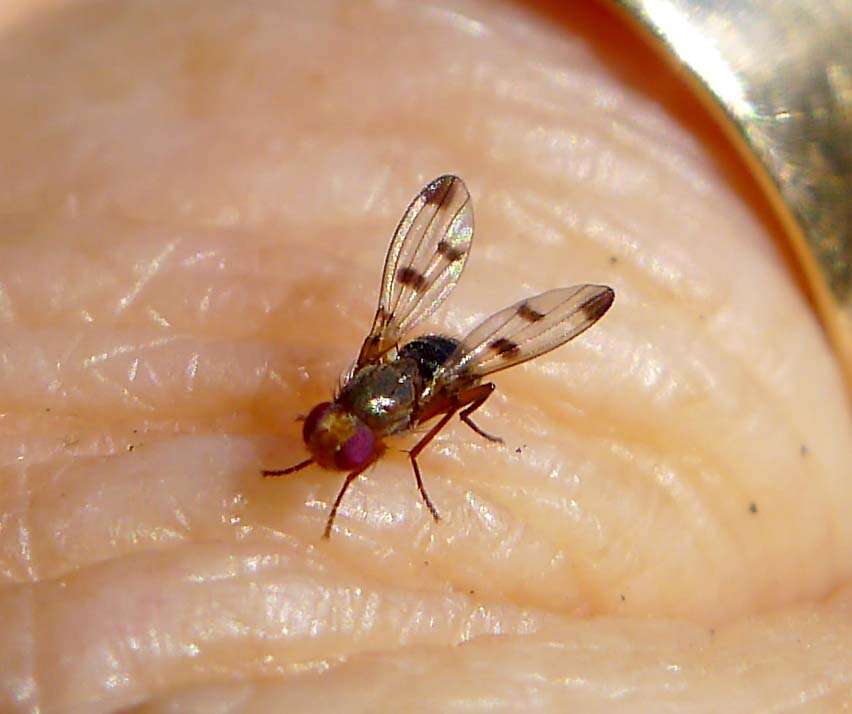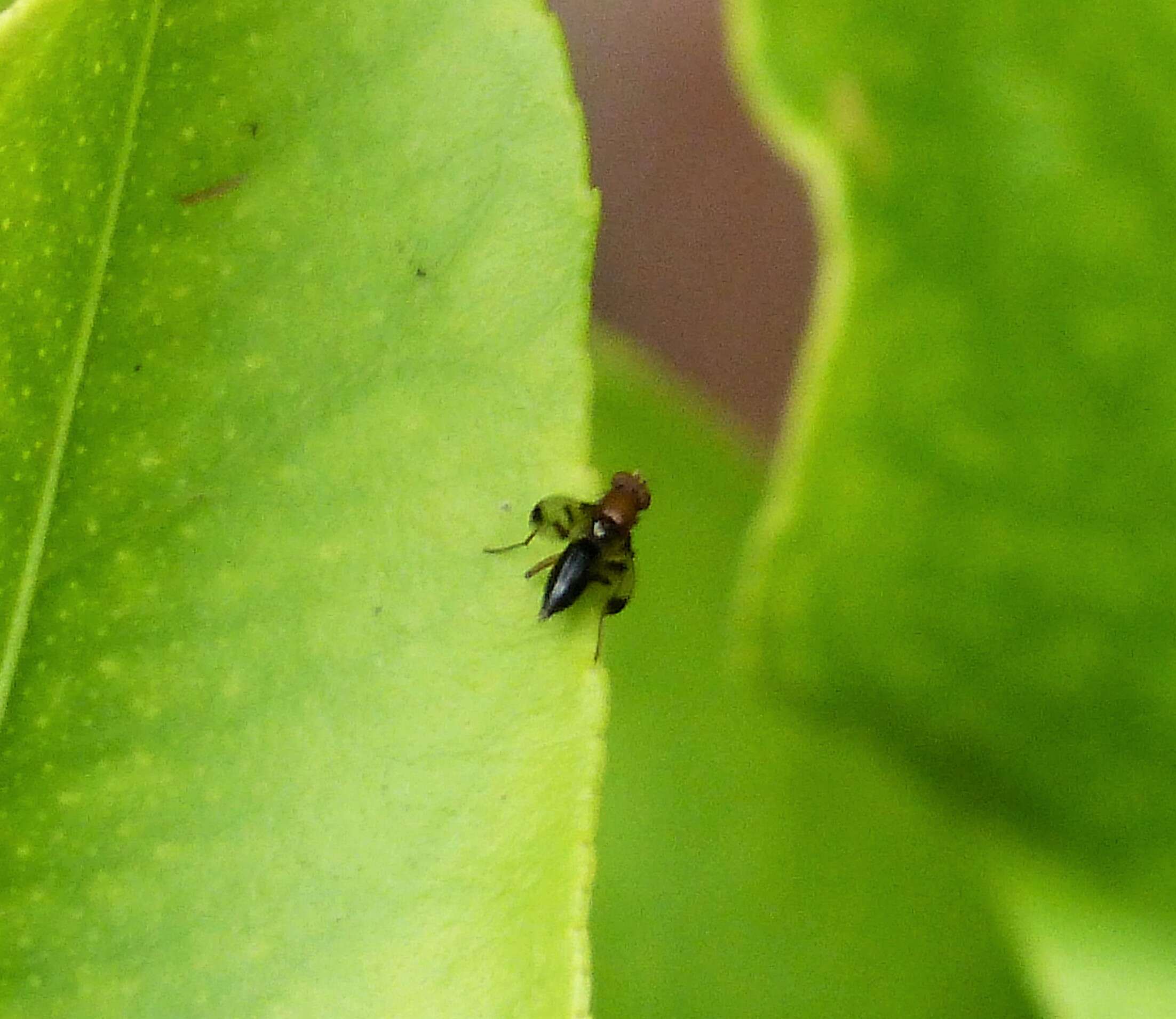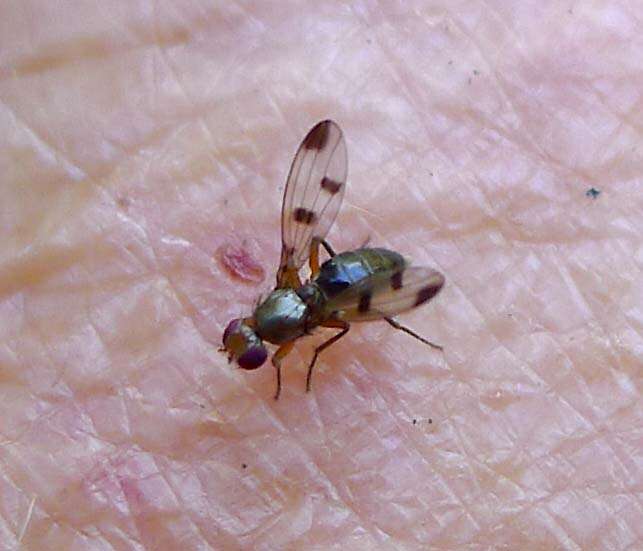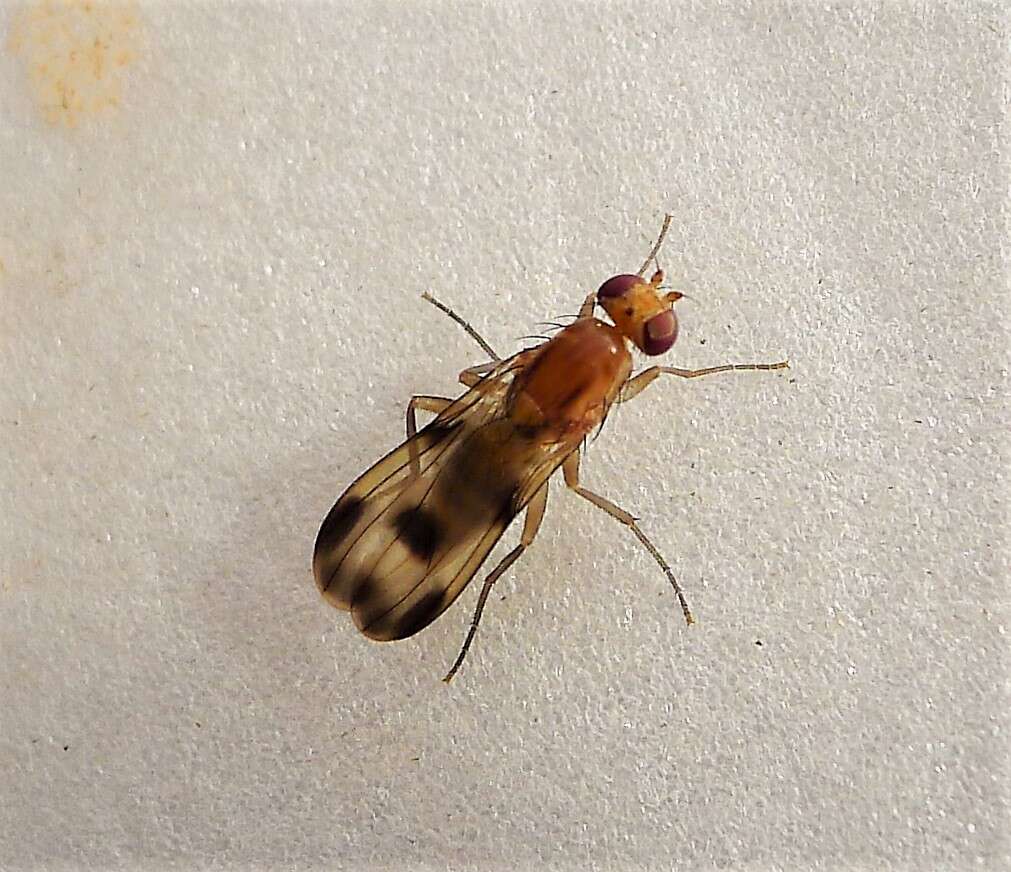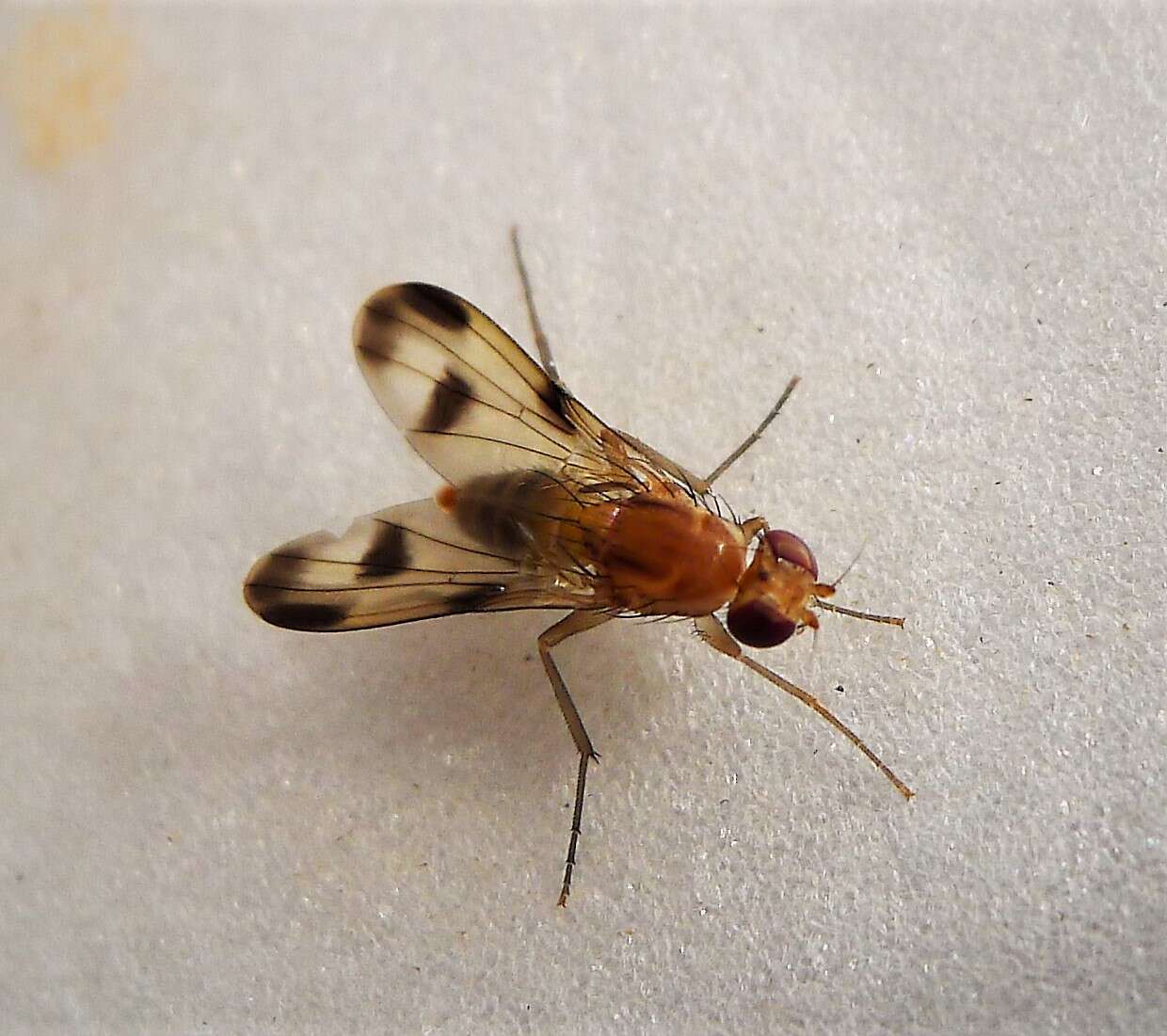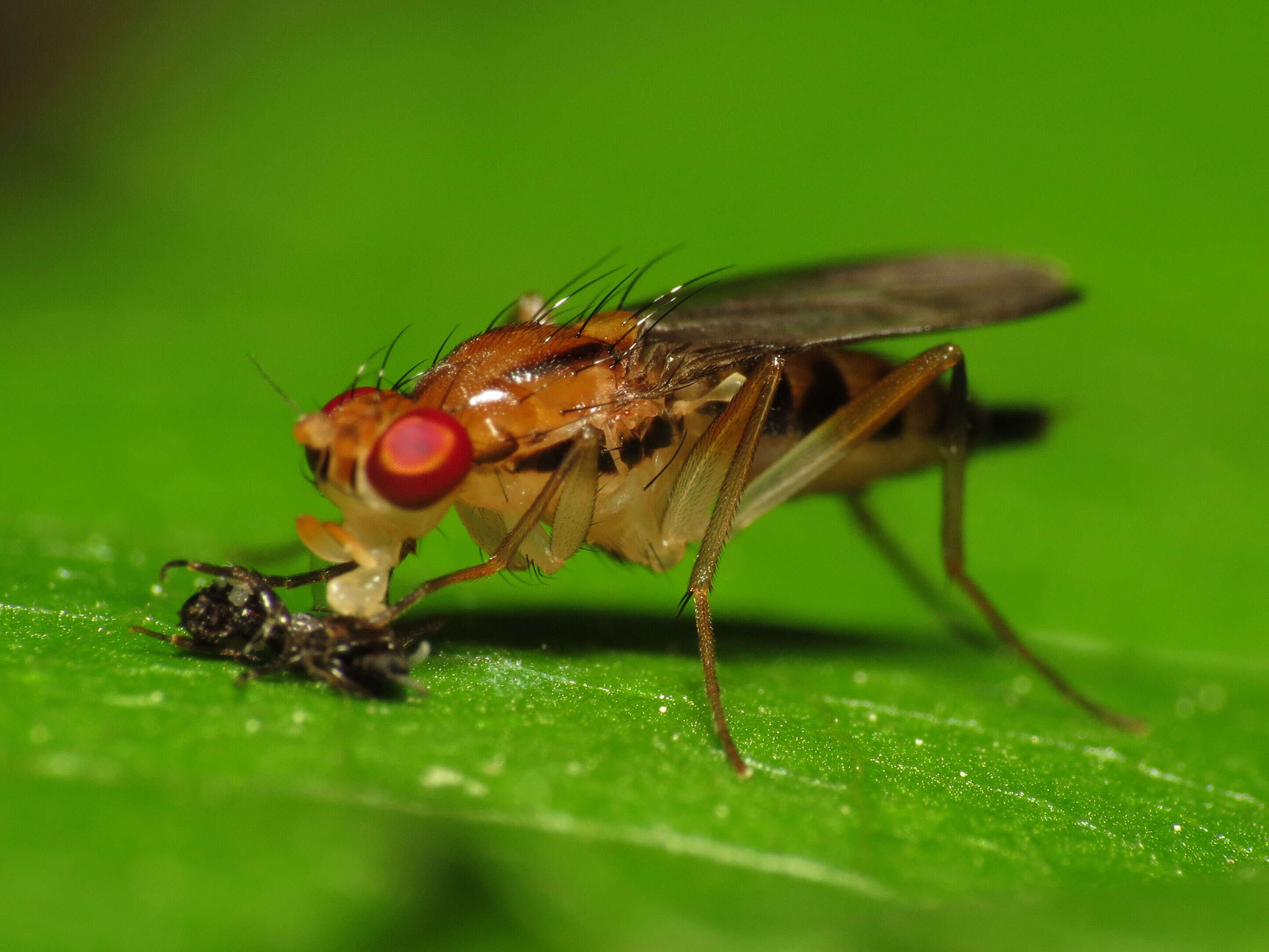On 16 June I found a whitish blotch mine in a Lapsana communis leaf near my house here in Ipswich. The mine extended along the mid-rib with offshoots into the leaf blade. I kept the leaf in a plastic bag until on 26 June a fly emerged. A yellow/brown puparium was found in the bag afterwards. The small black fly was compared with Kenneth Spencer's Agromyzidae key. The sub-costa coalesces with R1 before reaching costa, there are 2 pairs of dorsocentral bristles, the fly is uniformly black with no facial keel. It can't be Hexamyza which causes galls which indicates that it is Ophiomyia. Turning to the Ophiomyia key: no obvious facial keel, costa extends to M1+2, orbital setulae both proclinate and reclinate, conspicuously long, proclinate above, a few in front reclinate. I measured the wing of my specimen as about 2 mm (cf 2.5mm in the key). All this indicated Ophiomyia cunctata. The inset close-up shows the orbital setulae of my specimen, which are a very good match to the picture in Agromyzidae of Fennoscandia (Spencer 1976) which he describes as unique to Ophiomyia cunctata. No records for this species in Suffolk are currrently on NBN Gateway, though Spencer 1972 reports an observation in Newmarket (J E Collin). I suspect that this another case of under-reporting. Nipplewort is a very common weed and, around here at least, many of their leaves have been mined.The ID of Ophiomyia cunctata has now been confirmed by Milo Cerny on diptera.info, see
www.diptera.info/forum/viewthread.php?forum_id=5&thre...Details of record Ophiomyia cunctata 26 June 2014 TM166450 Christchurch Park area, Ipswich, East Suffolk emerged from leafmine in Nipplewort (Lapsana communis)

